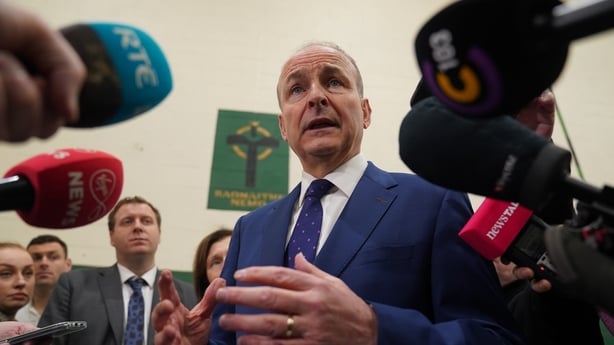In the new normal of Irish politics, forming a government is a bit like putting pieces of a jigsaw together.
For a Dáil majority, 88 seats are needed. But for comfort and given the rate of attrition in governments these days, any party leader or leaders putting a coalition together would like to ensure they had at least 90.
Given that any single party will be hard-pressed to reach half that number, there are many pieces that need to be put in place to have a functioning coalition.
It's now looking that both the bigger pieces, and the smaller pieces, will be less straightforward than first envisaged.
The first part will require two out of the bigger three - Fianna Fáil, Fine Gael and Sinn Féin. The task to form a government will likely fall to Micheál Martin, given that Fianna Fáil is on course to come back with the most seats - likely in the mid 40s.

He has said he does not want to be in government with Sinn Féin, citing differences around its approach to Europe and its economic model. But if Sinn Féin comes in with more seats than Fine Gael, as now seems likely, should the former not at least be invited to the table?
It’s likely, given they've done it before, that Fianna Fáil and Fine Gael will seek to put a government together. That brings us to the second part.
What would the seat difference have to be for Fianna Fáil TDs and the grassroots to start putting the pressure for their party to hold the seat of Taoiseach?
Clare Councillor Tony O'Brien has put out the proposition tonight: "When do we tell them we are going back to the 2016 arrangement of confidence and supply, and they can stick their rotating Taoiseach?"
Last time around the seat difference was three. It would need to get closer to ten for Fianna Fáil to want to have things their own way. The campaign spats have left a bitter taste and renewed competitiveness between them.
Right now, the predictions have Fianna Fáil being around six seats ahead. That will give them a bit more power in any such coalition than last time. And its TDs won't be shy about looking for.
Once the hurdle of those two parties is overcome, they will still need a smaller party. With the Labour Party and Social Democrats on course for around nine seats each, it will likely fall to either to make up the numbers.
The soundings coming from those smaller parties in private is that they are not too keen.

They both have a better chance of consolidating that support from opposition. They say it is not ideal for first-time TDs to go straight into government, without a chance to get their feet under their Leinster House desks.
And just look what happened to the Greens, who are now all but wiped out for actually delivering on their policies in coalition.
If Labour and the Soc Dems shy away, then the focus turns to Independents. But the preference among many figures in the bigger parties has been to work with a political party than a number of individuals with often competing demands.
The first time line to form a coalition will be on 18 December when the Dail next sits. It is unlikely a government will be voted in on that day.
Micheál Martin has hinted at another deadline, suggesting during the campaign that a government should in place by the time Donald Trump is inaugurated as US President, on 20 January.
After that, a flurry of new announcements from the White House could require a firm and stable government at this end to advocate for Ireland’s beset interests.
Against this looming uncertainty, a government will have to be formed, and another election would be a hard sell.
It’s likely they’ll get there in the end, But it certainly won’t be pretty.






